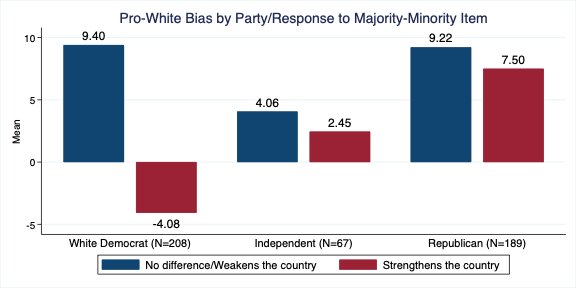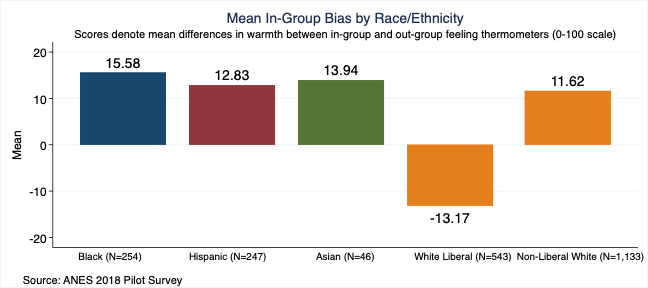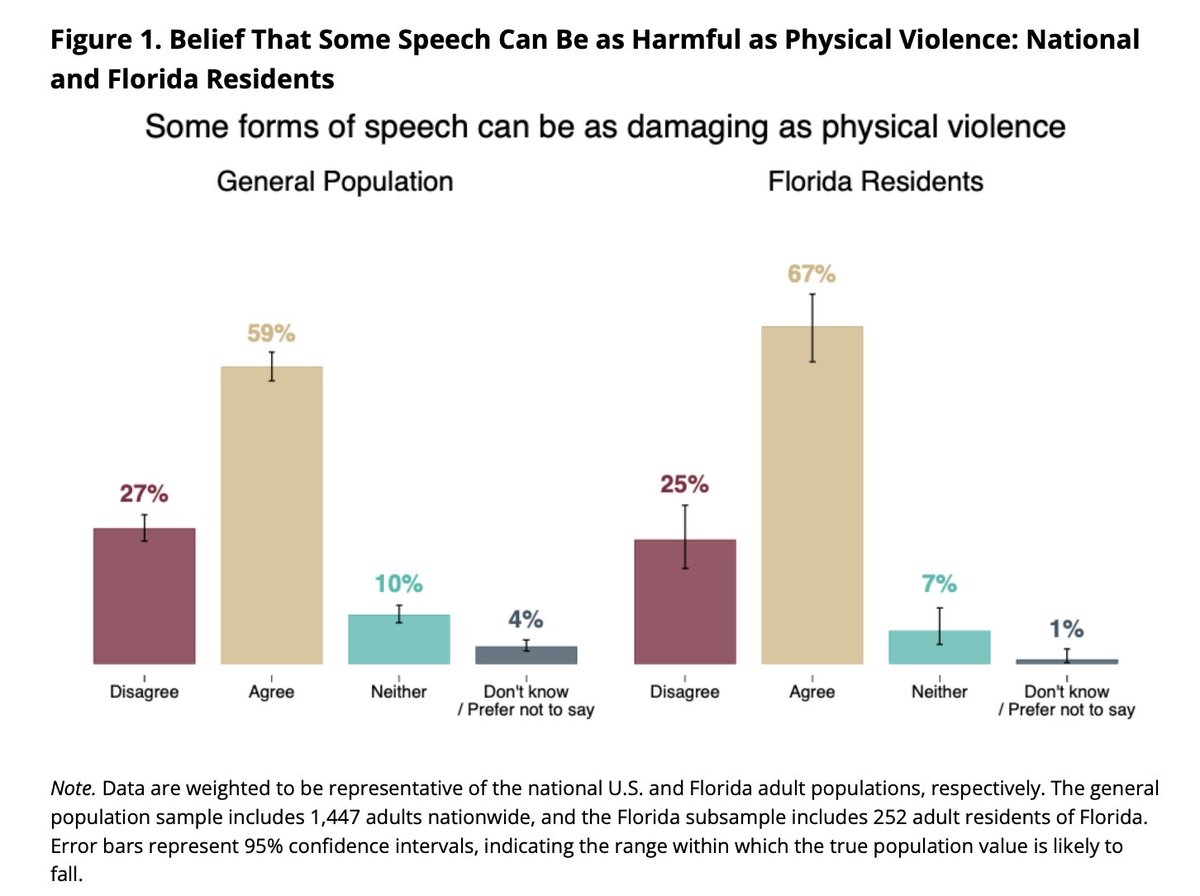Young (18-34) whites exhibit the lowest in-group bias of any racial/ethnic group, while white liberals are the only demographic to register a pro-outgroup bias (#whiteguilt) 



Somewhat relatedly, a clear majority of young white libs and dems think that a majority-minority America would "strengthens the country", while a majority of mods, indeps, reps and cons say that it 'doesn't make a difference.' 



White democrats and liberals who give the 'strengthens the country' response are significantly more likely to register a pro-outgroup bias 



This difference in pro-ingroup scores among liberals by majority-minority response is actually fairly large--0.65 of a standard deviation. 

More strikingly, there are no sig. differences among white indeps and reps. They show a slight pro-ingroup bias regardless of their feelings about a major.-minor.-US. For Libs, oth, it appears a maj-man comes with a greater tendency to distance/disassociate from the 'in-group'
To add yet another datapoint, 16% of white dems and 20% of white libs attended anti-trump protested since the election. And, on the average, attendees registered varying degrees of pro-outgroup bias, including 0.9 and 0.7 of a standard deviation for libs and dems, respectively 







Independent and moderate participants also show pro-outgroup bias, but their numbers are too small to arrive at a precise estimate.
Data from the ANES 2016 show that the in-group bias pattern noted above (lowest among whites + pro-outgroup bias among white liberals) applies more generally/is not limited to the 18-34 group. 



• • •
Missing some Tweet in this thread? You can try to
force a refresh















